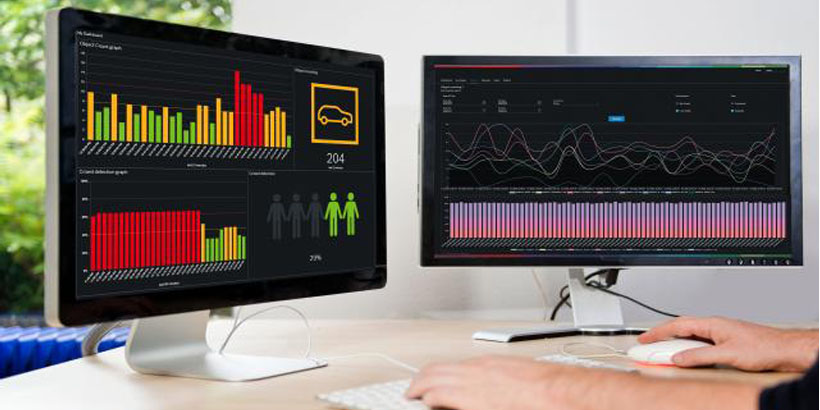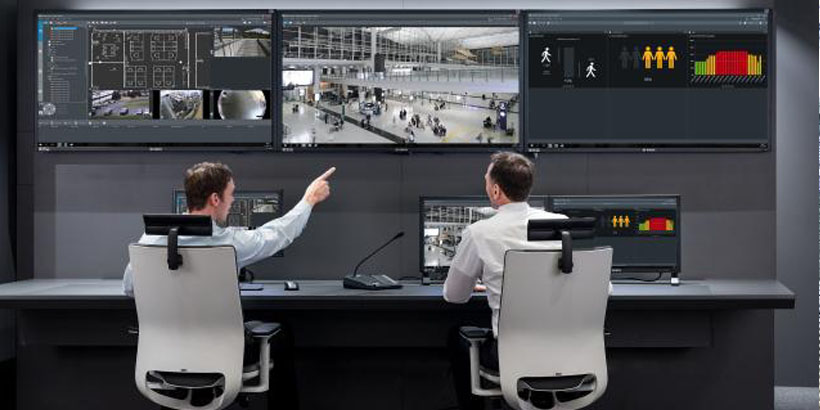 There is a plethora of systems which offer total site management, and many are capable of adding value for businesses and organisations. Using real-time data to assist in managing a site makes sense, and can add efficiencies for end users which in turn equate to an enhanced return on investment. Data has value, and where it can be mined to enhance business operations, it ensures a smarter solution for many businesses. The question for users is how to best leverage the available benefits.
There is a plethora of systems which offer total site management, and many are capable of adding value for businesses and organisations. Using real-time data to assist in managing a site makes sense, and can add efficiencies for end users which in turn equate to an enhanced return on investment. Data has value, and where it can be mined to enhance business operations, it ensures a smarter solution for many businesses. The question for users is how to best leverage the available benefits.
Currently, a growing number of businesses and organisations are looking to their technology-based investments to assess how they can increase operational efficiencies, automate frontline tasks and make better use of the information their systems gather to run elements of their business. The variety of systems available range from dedicated building management systems (BMS) which rely on input and output values from various systems such as HVAC and power management, through to IoT deployments which use disparate devices to create some level of uniformity in terms of communications and processing of information.
While these approaches have some merit, there are two flaws which make their appeal more limited in a number of use-cases. The first is that often the data gathered is solely generated by other systems. For example, with a BMS, the system might be able to gather temperature data from sensors and compare this with heating levels based on HVAC outputs. Where BMS has a weakness is in relating the data to the behaviours of people, the occupants of the building.
Similarly, with IoT, a more diverse range of data can be gathered using disparate devices. While this approach offers more flexibility, it does present problems with regard to aligning the information via one single console. Indeed, much of the flexibility in regards to the choice of devices might be lost unless the selected options can all communicate to the chosen interface.
Another issue with IoT-enabled systems and single-focus options such as BMS is one of everyday reliability. Many such options use standard Wi-Fi, which can be temperamental. Also, a lack of interface standards means some devices can interfere with the operations of others.
A solution exists in the form of security-related technologies. These make use of robust and resilient infrastructure such as proprietary polled wireless connections, as would be expected from a life-safety system. They are also designed to offer an ‘always-on’ solution and so feature functions such as failover, ensuring if there is an issue, business operations will not be impacted.
Additionally, security technologies are adept as handling information about the behaviours of people in the building or site, as well as input and output data from a wide range of other systems and devices, all managed via a single GUI (graphical user interface).
Behavioural information can be gathered via existing systems in many applications. Access control systems provide real-time data about who is on site, who they are with, and where in the facility they are at any given time. It can also provide accurate information about occupancy levels, footfall and flow, management of spaces and assets, etc.. Video systems can use advanced analytics to detect and report a wide range of data, varying from whether people or vehicles have been detected, through to the number of people congregating in an area, tracking persons based on a number of personal attributes, and exceptional behaviours. Alarm systems can identify human motion inside and outside buildings, as well as tracking motion through a site.
The collected data can be used in combination with an array of other notifications from peripheral systems, enabling smart business decisions to be made automatically. For example, if a department is empty, the power management could be instructed to turn off power. If motion is detected in a hazardous area, ventilation fans could be automatically switched on. During the current pandemic, a notification could be sent to a manager if occupancy in a specified area goes above a safe level.
The power of metadata
Often, the key to a smart solution is metadata. Metadata is effectively data about data, and is captured in many video applications to enhance the use of video analytics. With metadata, a user can interrogate video information for a lot of valuable information, even if the system was not initially configured to provide such insights.
 The metadata can then be repurposed for a range of tasks. For example, video analytics looking for people entering and leaving an area could also be used to provide people counting reports. Because the metadata exists separately from the video, there are no privacy issues. It is also lightweight when compared to video data, so storage and processing requirements are reduced. The data is anonymous, and can be presented to identify trends, such as when visitors to a site reach peak levels in a typical day or week. This can allow the HR department to efficiently deploy staff to meet demands.
The metadata can then be repurposed for a range of tasks. For example, video analytics looking for people entering and leaving an area could also be used to provide people counting reports. Because the metadata exists separately from the video, there are no privacy issues. It is also lightweight when compared to video data, so storage and processing requirements are reduced. The data is anonymous, and can be presented to identify trends, such as when visitors to a site reach peak levels in a typical day or week. This can allow the HR department to efficiently deploy staff to meet demands.
Metadata offers the potential to improve safety, security and business decision-making. For many years, Bosch has allowed the metadata from its video analytics to be saved separately from the video data, allowing it to be ‘mined’ for a wealth of useful information. To further aid in this process, Bosch has also introduced a software solution: Intelligent Insights. This enables users to examine and deploy data in new ways. The software aggregates and visualises metadata from single cameras or multiple devices across sites, via intuitive widgets.
The captured information includes location, tracking, speed and direction of moving objects, counting data, occupancy, flow, exceptions, etc., which can be visualised in real-time. The information can be viewed as charts, graphs, tables, icons or as alphanumeric data, based upon users’ needs. This provides intuitive evaluation of site status and high level of situational awareness. Based on the provided data and reports, users can manage incidents, trends or events in a more efficient manner while making better informed decisions.
Intelligent Insights visualises the data in one of two ways: as a widget and as a report. Widgets display situations in live view or in time periods of between 10 minutes and 24 hours. Widgets are displayed in a simple dashboard. Examples of widgets include object counting (differentiating between people and vehicles, for example), object location changes, along with occupancy level, crowd detection and area fill (based on entry and exit data) which can be pivotal in creating COVID-Secure spaces.
 Reports add extra value by allowing detailed analysis of events, incidents and trends., enabling the user to adjust and alter actions based upon patterns of behaviour, site status changes, staffing levels, or a whole range of other data.
Reports add extra value by allowing detailed analysis of events, incidents and trends., enabling the user to adjust and alter actions based upon patterns of behaviour, site status changes, staffing levels, or a whole range of other data.
The number of widgets and dashboards supported by Intelligent Insights is customisable and can be scaled a needed dependent upon customer requirements. If Bosch Intelligent Video Analytics are deployed, counting statistics of customer-specific objects can also be visualised and reported.
 Intelligent Insights is a powerful, future-proof standalone software package, but it supports seamless integration. When integrated with BVMS, it can manage live and recorded video streams and metadata within one unified user interface. This removes any need to switch between applications. An integration with BVMS can also include intrusion detection and access control management.
Intelligent Insights is a powerful, future-proof standalone software package, but it supports seamless integration. When integrated with BVMS, it can manage live and recorded video streams and metadata within one unified user interface. This removes any need to switch between applications. An integration with BVMS can also include intrusion detection and access control management.
Cybersecurity and privacy protection
Data security and privacy protection are a key part of Bosch’s solutions. Intelligent Insights uses anonymous data from cameras, ensuring privacy is protected at all times. All communications between the cameras and the Intelligent Insight web interface are secured using TLS 1.3, which encrypts the transmitted data at the highest levels.







